OverviewKorea Aerospace Industry
항공우주산업 소개
Korean Aerospace Industry- Overview
- Main Aircraft Programs
- Main Space Programs
POINT
01
Korean Aerospace Industry

History & status of aviation industry
History
 The late 1970s ~ 1990
The late 1970s ~ 1990
- Simple production activities focused on maintenance and licensing
- Assemblying 500MD and F-5E/F. License production of F-16 and UH-60
 The late 1990’s
The late 1990’s
- Development of indigenous aircraft such as KT-1 basic trainer, T-50 supersonic advanced trainer, and Surion helicopter
 2000’s
2000’s
- Implemented various aerospace industry improvement program such as research and development of aircraft parts
- Began KT-1 basic trainer export
- Participation in overseas RSP including Airbus and Boeing
- Smart UAV development
 2010s - Present
2010s - Present
- Beginning of the era of aircraft export (total 137 aircraft have been exported to 7 countries)
※ KT-1, T-50, and FA-50 have been exported to Indonesia, Iraq, Peru, Philippines, Senegal, Thailand, and Turkey - Local production of airframe parts for the most advanced civil aircraft such as A320, A350, B737, and B787
- Development of KC-100
- Acquired the FAA BASA certification
- Developed and launched the Korean space launch vehicle (KSLV-I) in Jan. 2013
- Development and export of FA-50, light combat aircraft
- Expanding exports of civil aircraft parts to overseas commercial aircraft manufacturers
- Developing KF-X and Light Civil Helicopter/Light Armed Helicopter (LCH/LAH)
- Fostering various UAV and MRO programs
- Developing the Korean space launch vehicle II (KSLV-II) and devising the Lunar exploration program
- Concluded the Mutual Recognition on the Airworthiness Certification of Korea-US military aircraft in November 2016
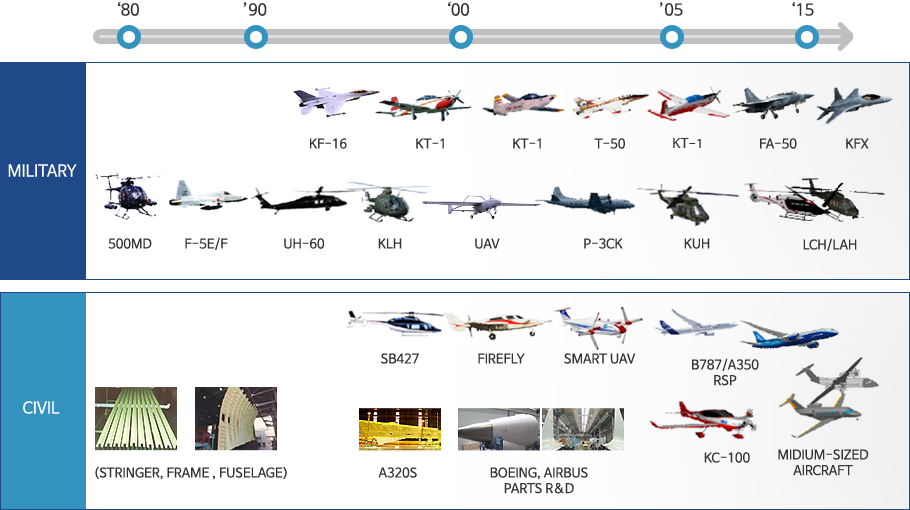
Korea Aviation Industry’s Capability
 A certain level of design/development capabilities
A certain level of design/development capabilities
 Test and evaluation technology secured
Test and evaluation technology secured
- Still short of technology in advanced combat function and large-sized commercial aircraft
- Assess to be capable of indigenously developing medium-sized aircraft
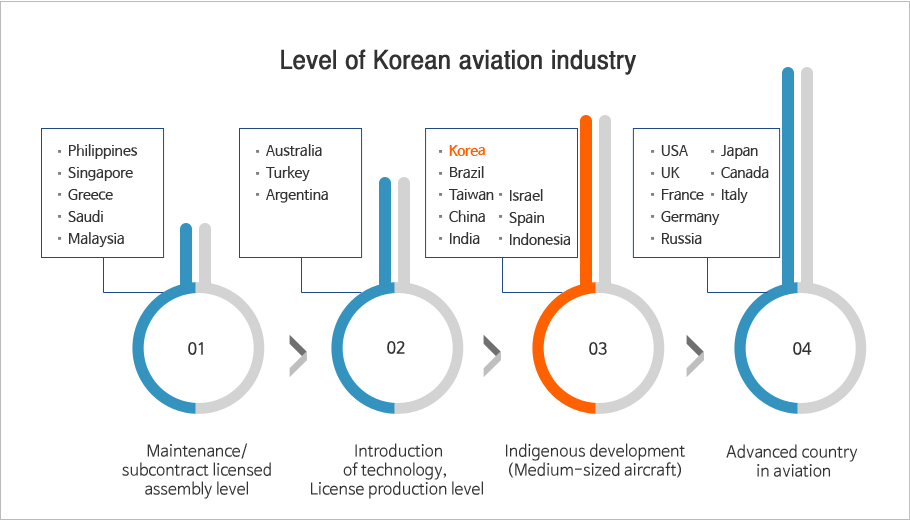
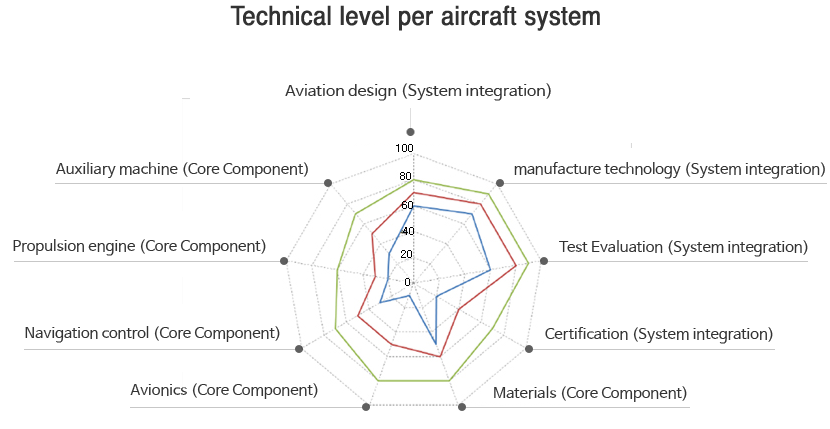
Company Status per Sector
 In Korea, 42% of 100 aviation companies are airframe companies accouting for 70% of industry’s exports.
In Korea, 42% of 100 aviation companies are airframe companies accouting for 70% of industry’s exports.
 Korea has a growth potential in the avionics industry in colloboration with advanced local electronics and ICT industries
Korea has a growth potential in the avionics industry in colloboration with advanced local electronics and ICT industries
| Sector | No. of company | Main companies |
|---|---|---|
| System integration | 2 | KAI, Korean Air |
| Airframe | 45 | ASTK, SAMCO, YULKOK, HIZE AERO
|
| Avionics | 24 | LIG Nex1, HANWHA SYSTEM |
| Parts | 15 | HYUNDAI-WIA, HANWHA |
| Engine | 5 | HANWHA TECHWIN, KOREA LOST-WAX |
| UAV | 5 | KAI, Korean Air, UCONSYSTEM |
| Total | 106 | - |
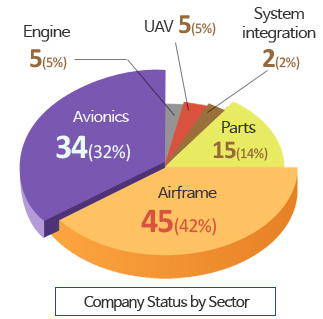
Employment status
 The supply of high-quality manpower is stable, but the demand for manpower is relatively low
The supply of high-quality manpower is stable, but the demand for manpower is relatively low
- 12 major universities have aeronautics departments
- Annually about 100 graduates with master’s or doctoral degree and 300 graduates with bachelor’s come into the market, and only 26% of them are being hired in aviation-related companies or research organizations
| Division | Category | 2015 | 2016 | 2017(forecast) |
|---|---|---|---|---|
| Aircraft | General management | 2,402 | 2,758 | 2,782 |
| R&D | 2,747 | 3,332 | 3,752 | |
| Technical work | 3,322 | 2,571 | 2,558 | |
| production work | 4,326 | 5,102 | 4,884 | |
| Subtotal | 12,797 | 13,763 | 13,976 | |
| Space | General management | 63 | 125 | 123 |
| R&D | 312 | 444 | 473 | |
| Technical work | 19 | 49 | 52 | |
| production work | 17 | 33 | 36 | |
| Subtotal | 411 | 651 | 684 | |
| total | 13,208 | 14,414 | 14,660 | |
Note : MRO manpower and government research institute researcher are not included
-
Aircraft(11,895 people)
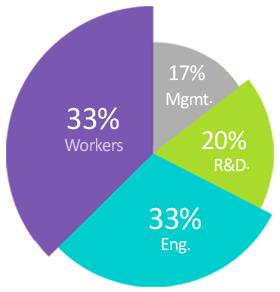
-
Space(512 people)
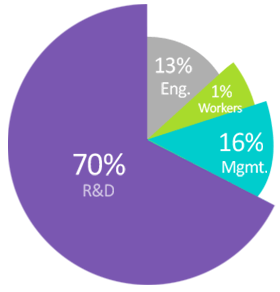
-
Employed: About 12,000 people
※ MRO manpower and government research institute researcher are not included
Infrastructure by Region
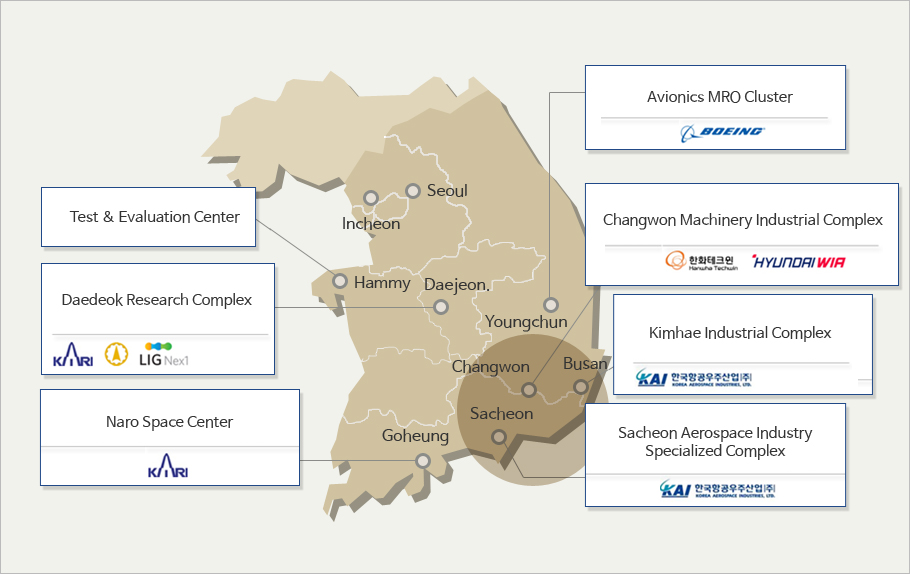
Note : The Korean government(The Ministry of Land, Infrastructure and Transport) announced that the Aerospace Industry Specialized Complex in Sacheon will be created as a national industrial complex covering Sacheon & Jinju in Gyeongsangnam-do Province(Over 80% of domestic aerospace companies are located) by 2020.
Vision of the Korean aerospace industry
 Basic plan for the development of aircraft industry
Basic plan for the development of aircraft industry
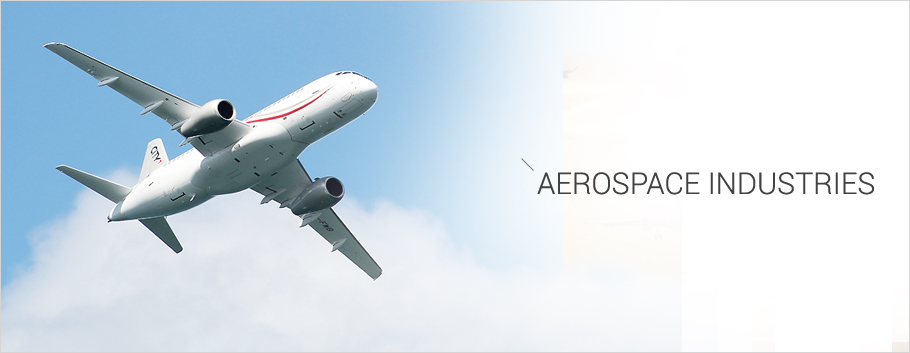
-
The Korean aerospace industry is expected to grow every year. Based on the "Basic Plan for the Development of Aviation Industry," a blueprint which aims to place Korea among the top 7 global position by 2020, existing projects will continue to grow while new projects will be seamlessly launched in series.
The KF-X and LAH/LCH (Light Armed Helicopter/Light Civil Helicopter) projects and other major programs are already on its development since 2015.
In addition, major aerospace projects bring added value and revolution in the industry such as T-50A’s bid to the US APT program in collaboration with Lockheed Martin, KUH-1 Surion based helicopter variant program, commercial aircraft parats research and development, next generation medium-class satellite program, KOMPSAT-6 (multi purpose satellite), KSLV-Ⅱ (Korea Space Launch Vehicle), Lunar Exploration, UAV program, etc
Successful completion of such projects will lead Korea to become G7 or one of the powerhouse in the aviation industry.









